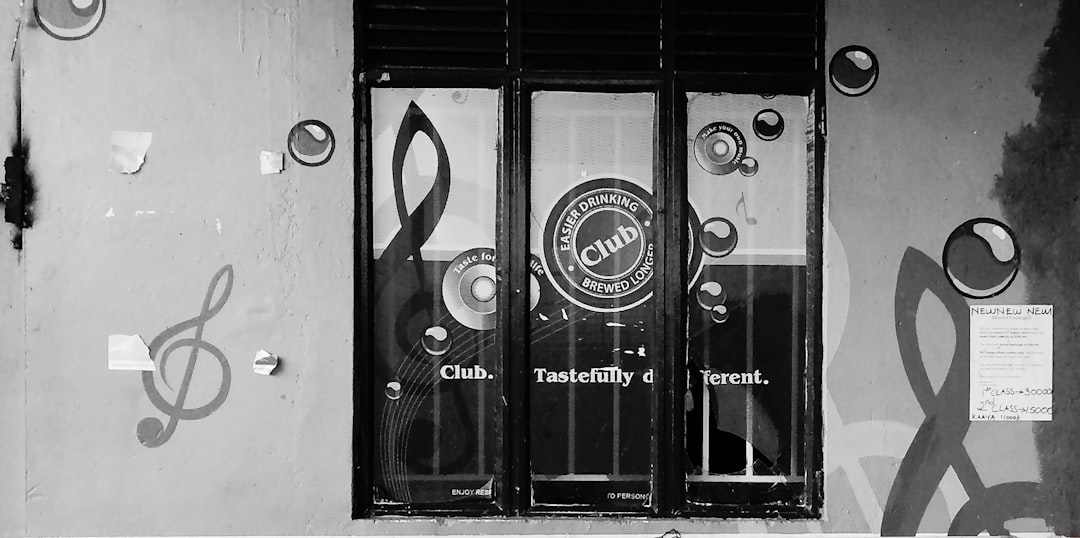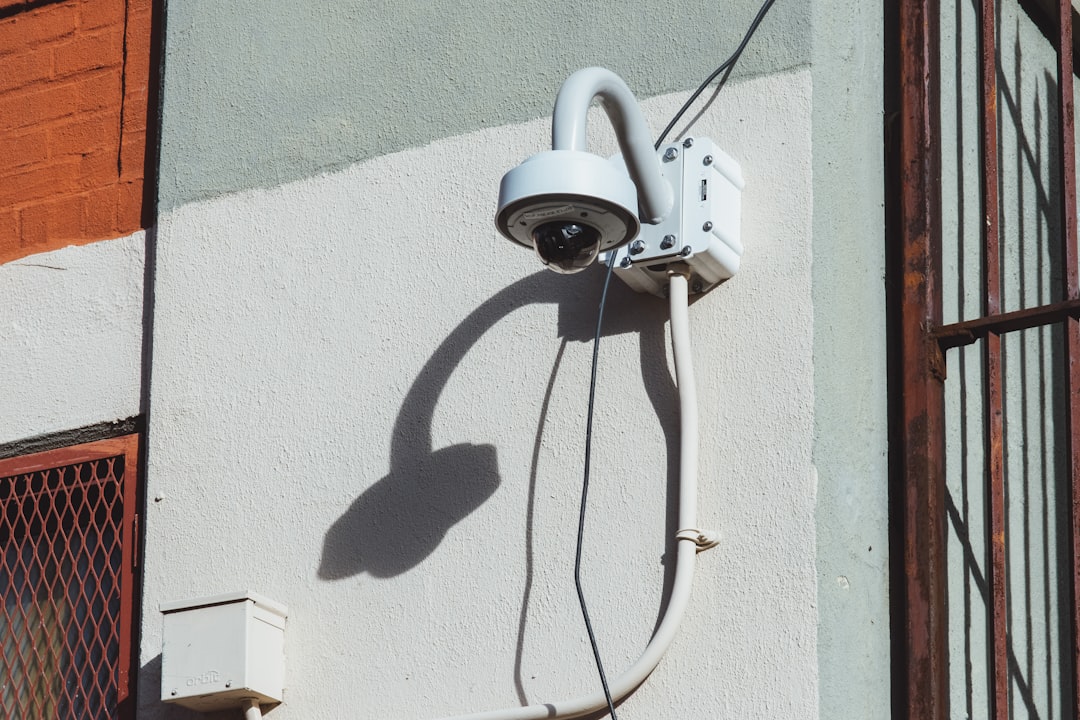
Supercharge your lead generation with a FREE Google Ads audit - no strings attached! See how you can generate more and higher quality leads
Get My Free Google Ads AuditFree consultation

No commitment
Supercharge your lead generation with a FREE LinkedIn Ads audit - no strings attached! See how you can generate more and higher quality leads
Get My Free Google Ads AuditFree consultation

No commitment
Supercharge your lead generation with a FREE Meta Ads audit - no strings attached! See how you can generate more and higher quality leads
Get My Free Google Ads AuditGet My Free LinkedIn Ads AuditGet My Free Meta Ads AuditFree consultation

No commitment
Supercharge your lead generation with a FREE Google Ads audit - no strings attached! See how you can generate more and higher quality leads
Get My Free Google Ads AuditFree consultation

No commitment
In today’s complex marketing landscape, succeeding as a security equipment supplier necessitates mastering both online and offline channels. Google Ads plays a pivotal role in connecting your broader marketing strategy to potential customers actively seeking your solutions. It enables you to intercept high-intent prospects precisely when they are searching for security equipment, bridging the gap between general awareness and sales. Security equipment suppliers benefit by capturing decision-makers' attention and measuring ROI from click to closed deal. Imagine targeting procurement officers seeking the latest biometric security devices or facility managers looking for wholesale security sensors. By mastering Google Ads, your business can thrive in a competitive market.

Security equipment suppliers compete in a market where decision-makers conduct extensive research and often remain anonymous, making it challenging to capture high-quality leads at the right moment. By deploying a structured Google Ads strategy, suppliers can efficiently identify, target, and engage commercial buyers who are actively searching for advanced security solutions.
This guide delivers a proven framework for B2B marketers in the security equipment sector, focusing on the core pillars that turn digital investments into measurable results. Each section is built to help organizations leverage sophisticated targeting, tightly aligned creatives, and robust performance tracking, ensuring every campaign maximizes qualified lead flow and sales pipeline velocity.
This step-by-step guide empowers B2B security equipment suppliers to set up, optimize, and scale Google Ads campaigns that consistently deliver qualified leads and maximize the return on digital investments. If you want to streamline every stage of your digital lead generation, get started for free with Sona.

Security equipment suppliers operate in a sector where precise timing and deep audience understanding directly impact revenue outcomes. Google Ads empowers these teams to engage buyers at exactly the right moment, turning anonymous web activity into actionable account-level insights that drive sales-ready conversations.
The market for security equipment is characterized by long sales cycles and high-value transactions, making it essential to identify intent signals and prioritize outreach. With the right data unification, marketing and sales teams can see which organizations are actively researching security solutions, allowing immediate response to qualified demand and reducing wasted effort on low-intent accounts.
Expanding into new markets or launching specialized products requires visibility among decision-makers who may not yet know your brand. Google Ads provides the reach and targeting needed to connect with buyers in emerging regions or industries, while dynamic audience segmentation ensures campaigns stay aligned with those most likely to convert as their engagement changes.
Security equipment companies benefit from enhanced integration of their offline and online data, which is essential for true ROI measurement. By syncing CRM systems with Google Ads, teams can track which campaigns generate pipeline, attribute sales to specific digital touchpoints, and confidently allocate budget to the channels and audiences delivering the highest value. This holistic approach transforms fragmented intent signals into a unified strategy for predictable growth.
Looking to unify and activate your data for more effective Google Ads campaigns? Get started for free with Sona.

Identifying scalable growth opportunities in security equipment marketing requires a blend of strategic targeting and precise execution. Suppliers who consistently expand their digital footprint adapt to new buyer behaviors, segment their messaging, and leverage data-driven decision-making to outperform static campaigns. For teams seeking to transform anonymous website traffic into actionable sales opportunities, Sona can reveal which companies are visiting—even if they don’t complete a form.
Ready to uncover more growth channels and optimize your security marketing strategy? Get started for free with Sona.
Effective audience segmentation is foundational for security equipment suppliers looking to maximize the impact of digital marketing. By aligning targeting with each stage of the customer journey, companies can optimize both lead quality and conversion rates, ensuring marketing spend directly supports pipeline growth and revenue outcomes. For further insights on marketing analytics and demand generation, explore the Sona blog.

| Industry | Keyword | Monthly Search Volume | Competition Level | Low Bid | High Bid |
| Security Equipment Suppliers | security x ray machine manufacturers | 10 | HIGH | 4.9 | 13.06 |
| Security Equipment Suppliers | security equipment suppliers | 30 | MEDIUM | 3.51 | 30.02 |
| Security Equipment Suppliers | fire alarm equipment suppliers | 30 | MEDIUM | 1.27 | 3.34 |
| Security Equipment Suppliers | alarm equipment supplies | 30 | HIGH | 1.11 | 10.51 |
| Security Equipment Suppliers | alarm supplies near me | 140 | MEDIUM | 2.07 | 15.39 |
| Security Equipment Suppliers | wholesale security equipment suppliers | 170 | HIGH | 2.56 | 12.7 |
| Security Equipment Suppliers | security supplies | 1900 | LOW | 1.07 | 11.65 |
Security equipment suppliers operate in a high-stakes environment where search intent and specificity determine campaign profitability. Selecting keywords that match the technical language and procurement workflows of facility managers, integrators, and procurement teams results in higher lead quality and improved cost efficiency.
A successful keyword strategy for Google Ads in this sector begins by mapping the full spectrum of search behavior. High-impact head terms such as “security sensors wholesale,” “commercial security cameras,” and “access control systems supplier” draw in buyers with immediate purchasing needs. For deeper insights into the most effective phrases, review this list of high-performing keywords for home security. Supplementing these with niche long-tail keywords like “IP67 outdoor security cameras for schools” or “PCI-compliant access control for retail” ensures visibility across different stages of the procurement cycle and captures buyers seeking specialized equipment or compliance-driven solutions.
Keyword intent must be carefully assessed. Commercial intent keywords, including “security system installers” and “enterprise video surveillance solutions,” attract stakeholders ready to take action or request a quote, while more generic research terms may serve for upper-funnel awareness but require dedicated messaging and audience segmentation. Implementing negative keywords such as “DIY,” “free,” or “used” eliminates unqualified consumer traffic, streamlining budget allocation toward high-value, B2B-focused searches. For additional keyword strategies, explore our library of actionable guides.
Continuous keyword refinement relies on real-time data. As leads interact with web content or request product specs, dynamic segmentation allows security equipment suppliers to pivot spend toward in-market accounts showing high purchase intent. Advanced platforms automatically update audiences and keyword priorities, enabling marketers to track which search terms consistently drive qualified inquiries, demo bookings, and revenue pipeline progression. This approach prevents wasted ad spend and ensures the most relevant, lucrative terms are always prioritized.
Integrating visitor identification with keyword performance data empowers marketers to recognize not just the volume of anonymous traffic, but which companies are behind high-intent searches. By tying keyword triggers to CRM profiles, teams can enrich their understanding of buyer behavior and sync lists of engaged accounts into their ad platforms. This alignment between keyword strategy and sales intelligence fosters more personalized, effective outreach and accelerates the movement of leads through the sales funnel. To see how you can optimize your approach, get started for free with Sona.

Security equipment suppliers must start with sharply defined keyword lists to capture high-intent commercial buyers. Grouping keywords by specific service types—such as surveillance systems, access control hardware, or intrusion detection devices—ensures relevance while supporting nuanced ad group segmentation. Geographic modifiers allow campaigns to reach buyers searching for solutions in specific markets; for actionable ideas, consult high-performing home security keywords to inform your initial targeting.
Integrating real-time behavioral signals is critical for prioritizing in-market accounts. With advanced visitor identification, marketers can move beyond anonymous website traffic and recognize which organizations are actively researching security equipment. This approach allows for dynamic audience creation that reflects shifts in buyer activity, ensuring keyword targeting and ad spend are always focused on the most valuable prospects.
Ad copy for security equipment must communicate technical credibility and immediate business value. Highlighting industry certifications, such as NDAA compliance or ISO standards, builds trust with discerning enterprise buyers. For insights on crafting ad messaging that resonates with the security sector, review this guide on Google Ads for security companies. Promotional messaging tied to limited-time demos, bundled offers, or complimentary site assessments can further drive response among procurement teams evaluating multiple vendors.
By leveraging intent data, marketers can tailor messaging to align with where each account stands in the decision journey. For example, buyers identified as repeat visitors or who have engaged with technical documentation may see messaging that emphasizes product integration or ROI, while first-time browsers receive broader value statements. This dynamic approach to ad copy ensures relevance and increases the likelihood of driving qualified leads into the funnel.
Landing pages should extend the ad experience by immediately addressing buyer intent and technical needs. Clear product categories, direct access to specification sheets, and visible compliance credentials help users validate fit quickly. Including customer testimonials from similar industries and detailed solution overviews creates confidence for procurement officers and technical evaluators; see how top-performing home security landing pages structure content for credibility.
For security suppliers targeting multiple verticals, personalized landing experiences based on ad group intent deliver stronger results. Integrating CRM data and visitor identification technology enables real-time customization—such as surfacing industry-specific solutions or automatically pre-filling inquiry forms—removing friction and boosting conversion rates.
Continuous optimization is essential for maximizing ROI in online advertising for security suppliers. Conversion data, segmented by equipment type and buyer profile, reveals which campaigns generate high-value opportunities and which require adjustment. For PPC strategies tailored to security, explore these PPC strategies for home security companies. Regular analysis of search queries, creative performance, and landing page engagement ensures marketing resources are allocated to segments with the greatest potential for security equipment sales.
Advanced conversion tracking, including both online actions and offline sales attribution, empowers revenue teams to measure the true impact of digital marketing investments. By syncing CRM and Google Ads data, suppliers gain a unified view of lead progression, enabling precise retargeting and real-time budget shifts. As audiences evolve through the funnel, dynamic audience updates keep campaigns aligned with current buyer intent, driving sustained growth and efficiency. To experience these optimizations firsthand, get started for free with Sona.

Security equipment suppliers operating in competitive markets benefit from strategic digital expansion that goes beyond basic advertising. Firms that align their marketing assets and leverage actionable audience data consistently outperform those relying solely on traditional outreach. For additional best practices on maximizing ROI with Google Ads in the security industry, see this guide on Google Ads for security companies.
By continuously analyzing search trends and campaign data, security equipment suppliers can adapt their content and marketing strategies to emerging opportunities. For a step-by-step approach to building impactful strategies, explore our playbooks library or get started for free with Sona to streamline your digital expansion.
Navigating the world of Google Ads for security equipment suppliers can be a challenging yet rewarding journey. We've explored the intricacies of creating effective advertising strategies tailored specifically for your industry, ensuring that your products stand out in a competitive market.
From understanding keyword targeting to crafting compelling ad copy and optimizing landing pages, the key points we've discussed provide a roadmap for increasing visibility and driving sales. By leveraging these strategies, you can attract potential customers and effectively showcase the value your security solutions bring to the table.
Embrace the opportunity to transform your business by implementing these best practices. The potential for growth and increased revenue is within reach, and with the right approach, you can position your company as a leader in the security equipment sector.
To truly harness the power of these strategies, start for free and experience our platform's capabilities. Unify your go-to-market data with actionable insights and drive your business forward today.
Security equipment suppliers should focus on precise keyword targeting, creating compelling ad copy that highlights industry certifications, aligning landing pages with ad content, and continuously optimizing campaigns using data-driven insights and advanced attribution.
Suppliers can use sophisticated targeting strategies that involve audience segmentation, intent signals, dynamic audience updates, and cross-channel integration to reach decision-makers in businesses and institutions.
Suppliers should prioritize high-impact keywords like 'security sensors wholesale' and 'commercial security cameras,' as well as niche long-tail keywords like 'IP67 outdoor security cameras for schools,' while avoiding low-intent terms using negative keywords.
The budget should be dynamically allocated based on real-time data to focus on in-market accounts demonstrating the highest likelihood to convert, ensuring efficient use of resources.
Success can be measured by monitoring keyword performance, audience engagement, landing page conversion rates, and using advanced attribution to connect campaigns with the sales pipeline.
Join results-focused teams combining Sona Platform automation with advanced Google Ads strategies to scale lead generation

Connect your existing CRM

Free Account Enrichment

No setup fees
No commitment required

Free consultation

Get a custom Google Ads roadmap for your business
Join results-focused teams combining Sona Platform automation with advanced Meta Ads strategies to scale lead generation

Connect your existing CRM

Free Account Enrichment

No setup fees
No commitment required

Free consultation

Get a custom Google Ads roadmap for your business
Join results-focused teams combining Sona Platform automation with advanced LinkedIn Ads strategies to scale lead generation

Connect your existing CRM

Free Account Enrichment

No setup fees
No commitment required

Free consultation

Get a custom Google Ads roadmap for your business
Join results-focused teams using Sona Platform automation to activate unified sales and marketing data, maximize ROI on marketing investments, and drive measurable growth

Connect your existing CRM

Free Account Enrichment

No setup fees
No commitment required

Free consultation

Get a custom Google Ads roadmap for your business
Over 500+ auto detailing businesses trust our platform to grow their revenue
Join results-focused teams using Sona Platform automation to activate unified sales and marketing data, maximize ROI on marketing investments, and drive measurable growth

Connect your existing CRM

Free Account Enrichment

No setup fees
No commitment required

Free consultation

Get a custom Google Ads roadmap for your business
Over 500+ auto detailing businesses trust our platform to grow their revenue
Join results-focused teams using Sona Platform automation to activate unified sales and marketing data, maximize ROI on marketing investments, and drive measurable growth

Connect your existing CRM

Free Account Enrichment

No setup fees
No commitment required

Free consultation

Get a custom Google Ads roadmap for your business
Over 500+ auto detailing businesses trust our platform to grow their revenue
Our team of experts can implement your Google Ads campaigns, then show you how Sona helps you manage exceptional campaign performance and sales.
Schedule your FREE 15-minute strategy sessionOur team of experts can implement your Meta Ads campaigns, then show you how Sona helps you manage exceptional campaign performance and sales.
Schedule your FREE 15-minute strategy sessionOur team of experts can implement your LinkedIn Ads campaigns, then show you how Sona helps you manage exceptional campaign performance and sales.
Schedule your FREE 15-minute strategy sessionOur team of experts can help improve your demand generation strategy, and can show you how advanced attribution and data activation can help you realize more opportunities and improve sales performance.
Schedule your FREE 30-minute strategy sessionOur team of experts can help improve your demand generation strategy, and can show you how advanced attribution and data activation can help you realize more opportunities and improve sales performance.
Schedule your FREE 30-minute strategy sessionOur team of experts can help improve your demand generation strategy, and can show you how advanced attribution and data activation can help you realize more opportunities and improve sales performance.
Schedule your FREE 30-minute strategy sessionOur team of experts can help improve your demand generation strategy, and can show you how advanced attribution and data activation can help you realize more opportunities and improve sales performance.
Schedule your FREE 30-minute strategy session





Launch campaigns that generate qualified leads in 30 days or less.
